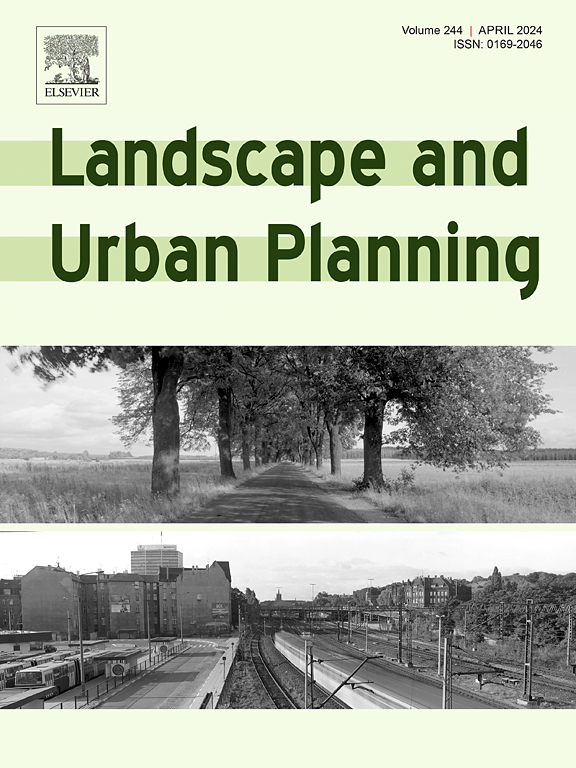小型绿地如何为城市街区降温:优化分布、大小和形状
IF 7.9
1区 环境科学与生态学
Q1 ECOLOGY
引用次数: 0
摘要
小于 1 公顷的绿地如何改善城市街区的室外热量条件?考虑到基于大小、形状和空间分布等相关城市设计参数的降温效果的可变性,本研究需要针对四种街区类型,结合这些参数制定不同的设计方案,并使用 ENVI-met 对这些方案的热感觉进行模拟。分别分析了冷却效果的三个方面--内部和外部冷却以及绿地的公园凉岛(PCI)效果。研究表明,在小型绿地内,不同情况下的平均生理等效温度(PET)最多可相差 4 ℃。绿地面积越大,形状越方正,内部的 PET 越低。如果绿地外的降温效果较好,分组小绿地的配置可使 PET 降低 1.3 ℃,绿地的分布是影响最大的因素。PCI 效果主要取决于绿地的大小和形状,绿地面积越大、形状越方正,降温效果越好。但对于有放射状街道的街区,它与空间分布的关系更大,狭窄街道旁的线性绿地可使 PCI 降低 10.2 ℃。这项研究为有效的设计方案提供了指导,为城市设计师和规划师开展凉爽城市街区绿化项目提供了实际参考。本文章由计算机程序翻译,如有差异,请以英文原文为准。
How small green spaces cool urban neighbourhoods: Optimising distribution, size and shape
How can green spaces smaller than 1 ha improve outdoor thermal conditions in urban neighbourhoods? Considering the variability of cooling effects based on the relevant urban design parameters of size, shape, and spatial distribution, this study entailed development of different design scenarios combining these parameters for four neighbourhood typologies and simulates the thermal sensation of these scenarios using ENVI-met. Three aspects of cooling effects — the inside and outside cooling as well as the Park Cool Island (PCI) effects of the green spaces are separately analysed. The study shows that inside the small green spaces, the mean Physiological Equivalent Temperature (PET) of different cases can vary up to 4 ℃. Larger green spaces with a squared shape lead to cooler PET inside. For a good cooling outside the green spaces, a configuration of grouped small green areas can reduce the PET by 1.3 ℃, with distribution of the green spaces being the most influential factor. The PCI effect is mainly determined by size and shape of the green spaces, where a bigger size and squared shape leads to better cooling effects. But for neighbourhoods with radial streets, it is more related to the spatial distribution, which can result in a reduction of 10.2 ℃ in PCI for linear green spaces next to narrow streets. Guidelines for effective design scenarios are generated from this research, providing urban designers and planners with practical reference in neighbourhood greening projects for cooler cities.
求助全文
通过发布文献求助,成功后即可免费获取论文全文。
去求助
来源期刊

Landscape and Urban Planning
环境科学-生态学
CiteScore
15.20
自引率
6.60%
发文量
232
审稿时长
6 months
期刊介绍:
Landscape and Urban Planning is an international journal that aims to enhance our understanding of landscapes and promote sustainable solutions for landscape change. The journal focuses on landscapes as complex social-ecological systems that encompass various spatial and temporal dimensions. These landscapes possess aesthetic, natural, and cultural qualities that are valued by individuals in different ways, leading to actions that alter the landscape. With increasing urbanization and the need for ecological and cultural sensitivity at various scales, a multidisciplinary approach is necessary to comprehend and align social and ecological values for landscape sustainability. The journal believes that combining landscape science with planning and design can yield positive outcomes for both people and nature.
 求助内容:
求助内容: 应助结果提醒方式:
应助结果提醒方式:


